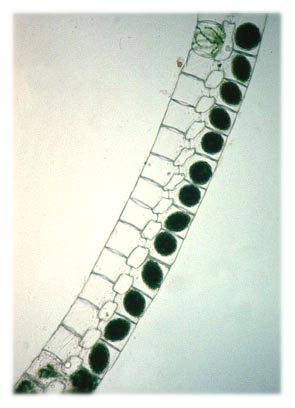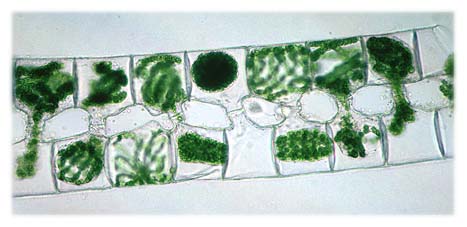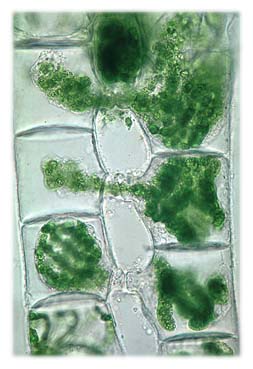
For the determination of a species it is necessary to look for reproducing specimens with spores. But a precise determination is not necessary for learning a lot of interesting facts from Spirogyra. It is easy to see that there are many species ; in a clean, eutrophic ditch with hard water in Holland we will find easily 20 different species. If we look at a filament of Spirogyra with the microscope, the first thing that attracts attention is the chloroplast, a narrow, banded spiral with serrated edges. The small round bodies in the chloroplast are pyrenoids, centres for the production of starch. In the middle of the cell we see the transparent nucleus, with fine strands linking it to the peripheral protoplasm. The filaments contain cells of different sizes and it is easy to find a new cell, just formed after a division.

